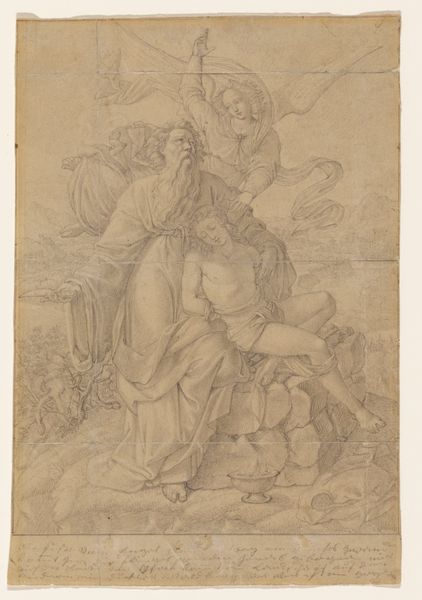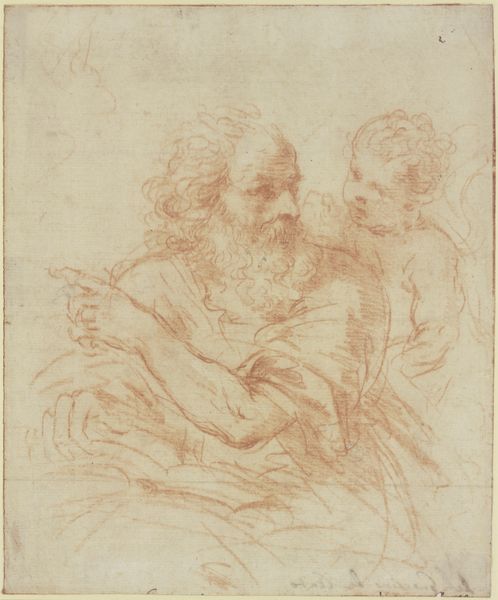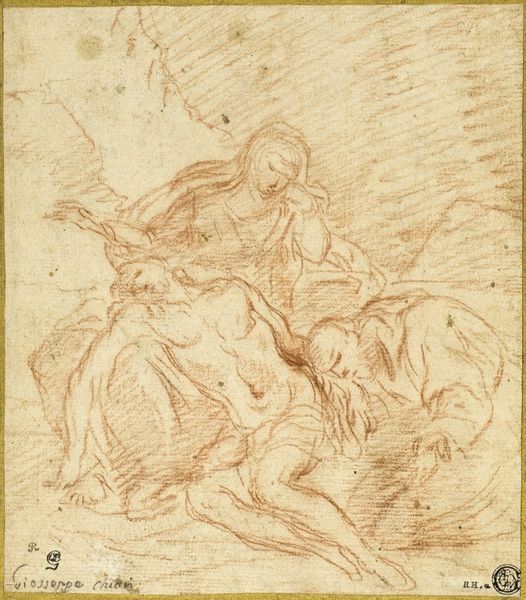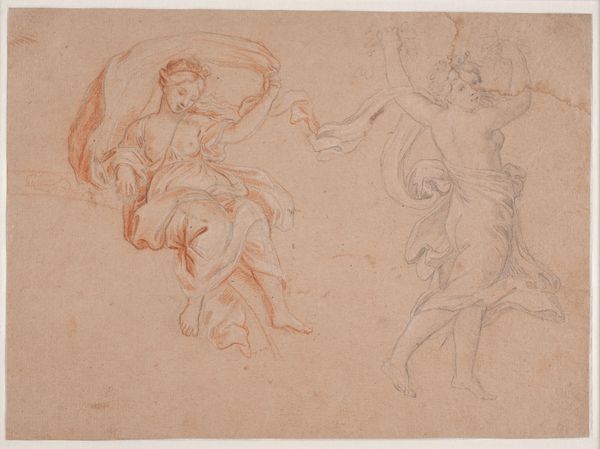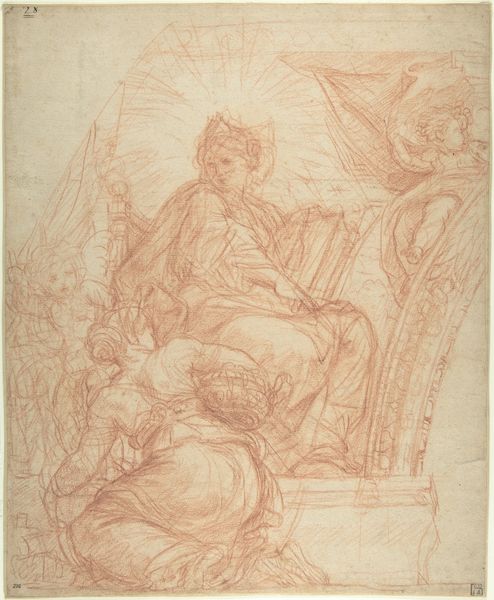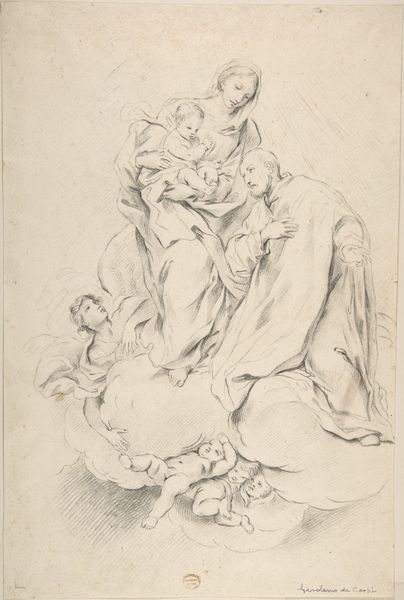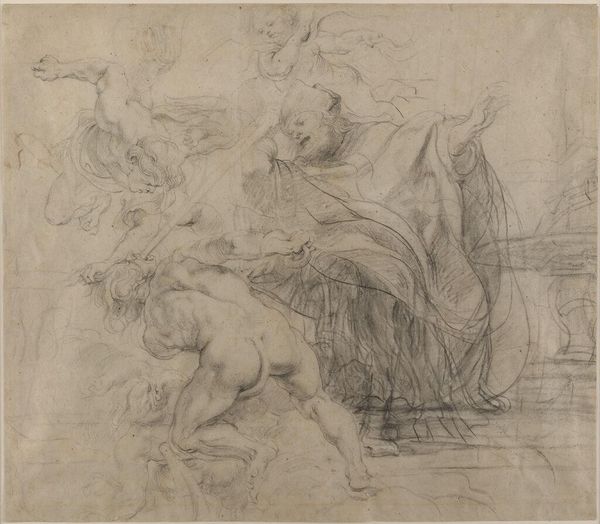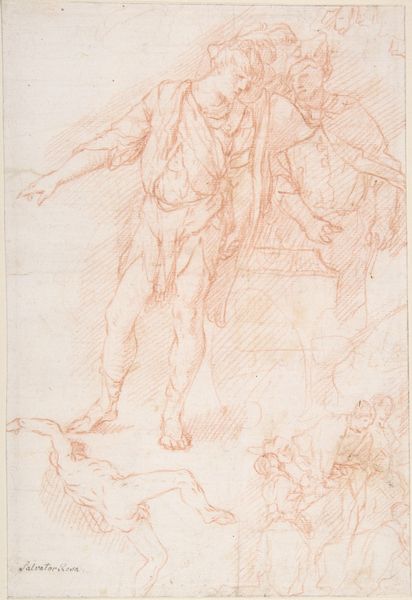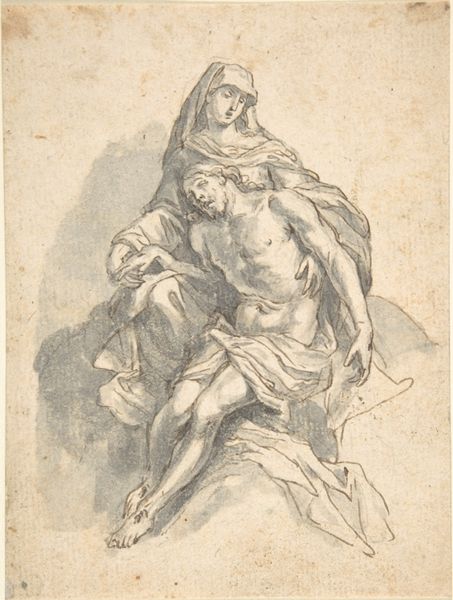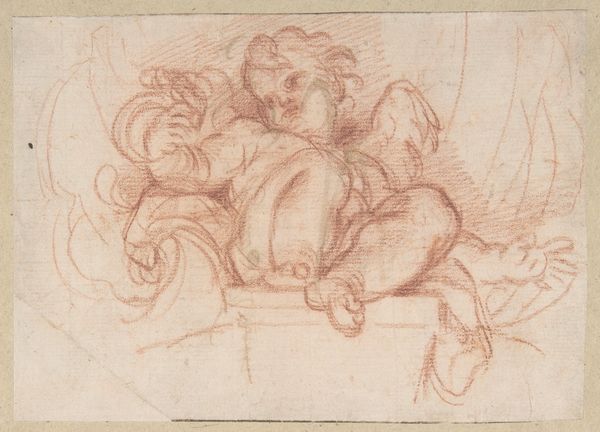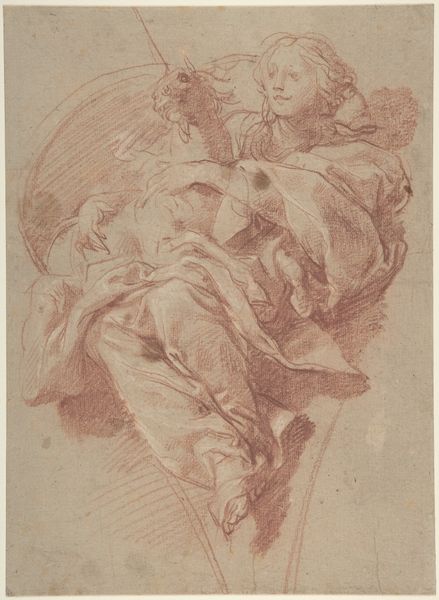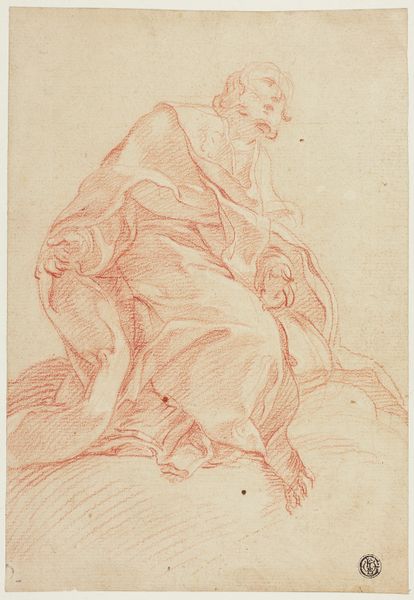
Allegorical Figure of Purity with a Unicorn and Putto (recto); Study of a Nude Boy (verso) 1642
0:00
0:00
drawing, print, pencil
#
drawing
#
allegory
# print
#
pencil sketch
#
figuration
#
11_renaissance
#
pencil drawing
#
pencil
#
italian-renaissance
#
nude
Dimensions: 15-5/8 x 10-5/16 in. (39.7 x 26.2 cm)
Copyright: Public Domain
Curator: What strikes me is this incredible sense of tenderness. There's such gentle, flowing line work. Editor: Indeed. What you’re looking at is a red chalk drawing by Baldassarre Franceschini, known as Il Volterrano, created around 1642. The recto side, the one facing us, is titled “Allegorical Figure of Purity with a Unicorn and Putto; Study of a Nude Boy” on the verso. It currently resides here at the Met. Curator: Ah, Volterrano, he dances on the paper! You feel the breath of divinity, don't you? I'm completely enchanted by how the figures seem to lean into one another. Almost a secret, sacred conversation. The unicorn, especially, feels so intimately connected. Editor: Allegorical representations of virtues became very popular at this time as society started focusing on the individual. Unicorns are typically seen as symbols of purity and grace. What Volterrano has drawn could very well represent chastity and innocence, at a pivotal turning point in society, with emphasis on morality. Curator: Precisely. Look at how he captures that impossible gentleness, the ideal of purity, but there’s also raw sensuality there. It’s in the texture of the chalk, how he caresses the paper with it. Almost like a fever dream, an artist imagining virtue. And of course the implied presence of carnal desire of the "Study of a Nude Boy (verso)". Editor: He clearly positions art here as having an important public and moral function. Artists such as Volterrano were thought to convey these ideas to a wider audience to strengthen moral sentiments. How fascinating. Curator: It whispers a secret language, the soul laid bare, seeking grace. Beautifully executed, what a poignant testament of hope that he shared with us through time! Editor: Indeed. And I'd say, from an art-historical lens, we gain insight into how early modern art reflects evolving societal concerns. Thanks for walking us through, it offers such fascinating interpretations!
Comments
No comments
Be the first to comment and join the conversation on the ultimate creative platform.
